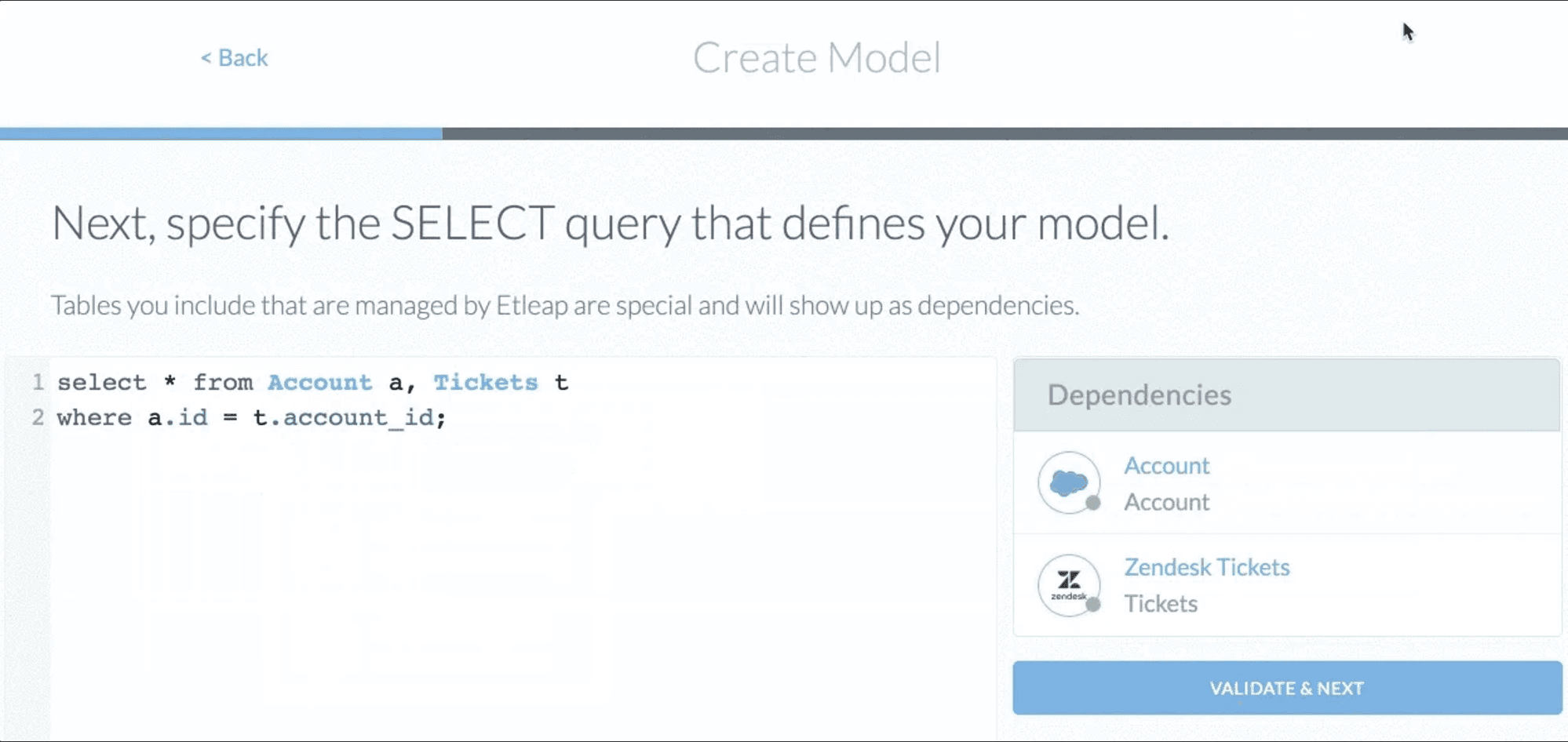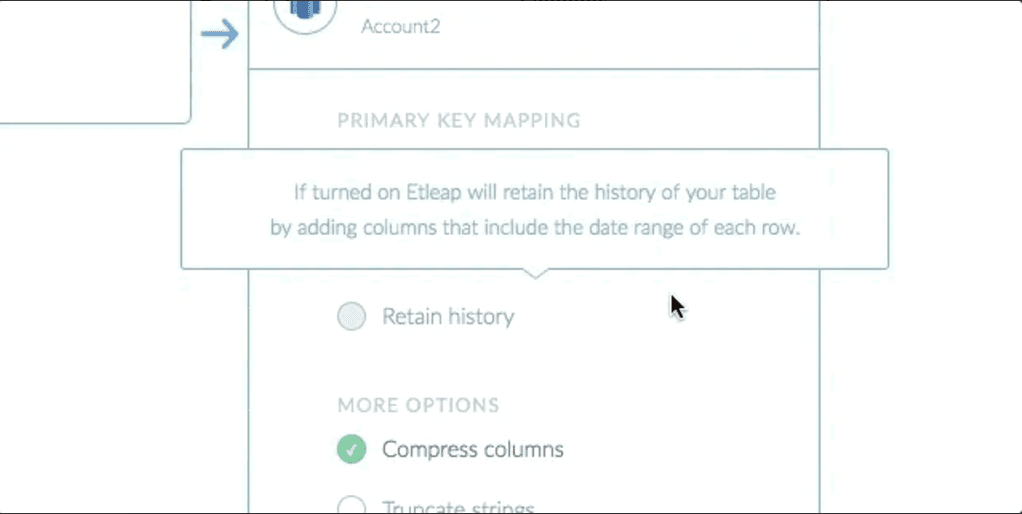New Features: Models and History Tables
I’m excited to tell you about two new features we’re launching today: Models and History Tables.

I’m excited to tell you about two new features we’re launching today: Models and History Tables.
Etleap has long supported single-source transformations through data wrangling. This is great for cleaning, structuring, and filtering data, and for removing unwanted data, such as PII, before it is loaded to the destination. Today, we’re announcing the general availability of models, which enable transformations expressed as SQL queries. Two primary use cases for models are combining data from different sources to build data views optimized for analytics, and aggregating data to speed up analytics queries.
Etleap models are Redshift tables backed by SQL SELECT queries that you define, running against data that has been loaded to Redshift. Etleap creates tables that are the result of these SELECT queries, and updates these tables incrementally or through full refreshes. Etleap triggers updates based on changes to dependent tables, or on a schedule.

For regular pipelines into Redshift, Etleap fetches new and updated records from the source. Following transformation, new rows are appended to the destination table, and updated rows are overwritten. This update strategy is known as type-1 Slowly Changing Dimensions in data warehouse speak.
Sometimes it’s useful to be able to go back in time and query the past state of a record, or to be able to investigate how a record has changed over time. For this, Etleap now provides the ability to retain the history of a record collection. For this, the technique known as type-2 Slowly Changing Dimensions is often used. Here’s how it works in Etleap: An end-date column is added to the table. When a record is initially inserted into the destination table, this column’s value is null. Whenever the record is changed in the source, instead of overwriting the existing record in the destination table, a new row is appended instead with a null end-date value. The existing record’s end-date value is set to the new record’s update timestamp.
Starting today, history tables are available for all pipelines from sources that have a primary key and an update timestamp. To get a history table, check the ‘retain history’ box during single or batch pipeline setup.

Want to see these features in action? Request a demo here!